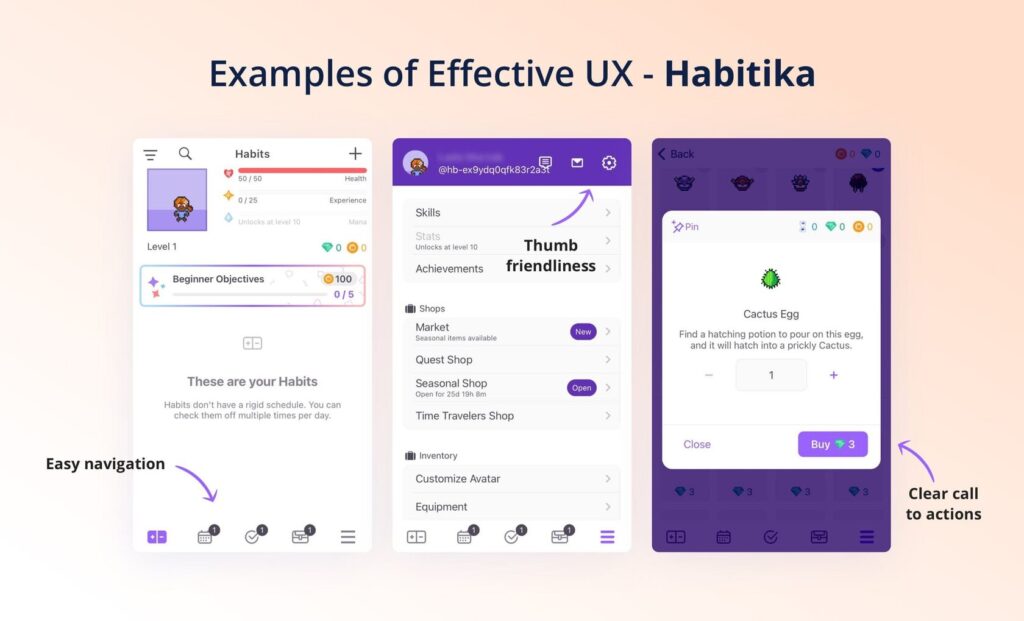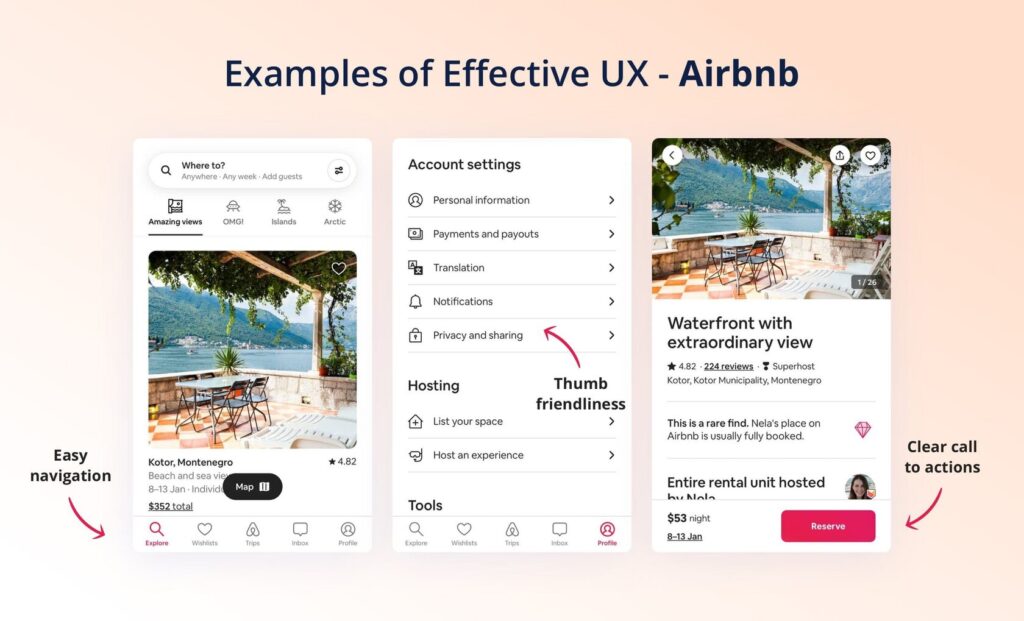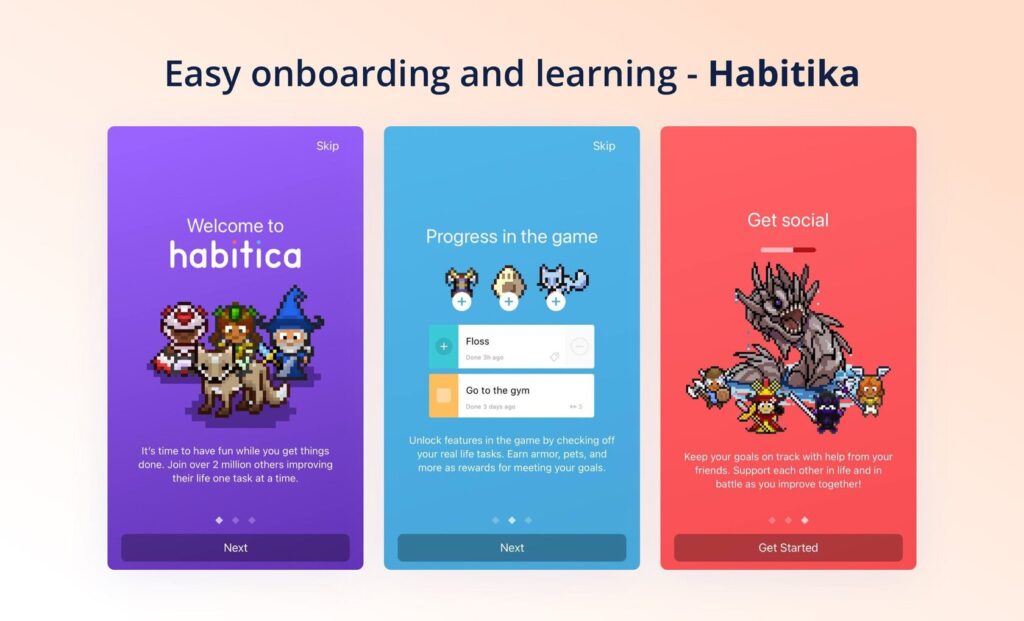User experience is a central component of any app. An easy-to-learn, convenient, and fast-working product is a guarantee of your competitiveness. Good ASO UX design app is important because even though we are ready to spend a lot of time on mobile apps, we don’t want to “bother” and deal with complex interfaces or slow apps.
It is a well-known fact that the products that simplify our lives are the most popular. According to a common theory, most people use apps in the following modes: micro-tasking (e.g., checking the bank account balance), navigating the area (e.g., searching for routes), and killing time (e.g., playing games, reading news, and texting). Any of these modes implies obtaining the desired results in the shortest possible time since the “bandwidth” of mobile users decreases over time.
The faster your app responds and the less time you need to spend mastering it, the more likely it will grow in popularity. While the process for creating the perfect UX varies by product, some optimization techniques work across the board. We will talk about creating a winning UX design in this article.
Table of Contents
What Is a Mobile ASO UX?
The mobile app user experience (UX) is the interaction of users with your product and its perception through the prism of functionality and usability. In simpler terms, UX design is a tool by which developers satisfy customer needs and achieve loyalty.
Why is UX design for mobile apps getting so much attention? User surveys and general app intelligence show that about 80% of people are willing to pay a higher price for a more comfortable experience. Also, more than half of the mobile audience says poor UX is a reason to lose faith in a brand or company. If the experience of interacting with a product is successful and enjoyable, more than 70% of users will return to it in the future. These impressive statistics prove that ASO UX design is essential to customer retention. In our blog you can read more about app retention rate.
Mobile ASO UX App Design Process
Before developing a mobile interaction design, you should do some preliminary work. The app design process might vary depending on your needs, but it should consist of the following basic steps.
- Analyze your target audience
Always keep in mind the fact that you create a product for consumers. Accordingly, it should satisfy their requirements first, and then your ideas. That is why you need to create a user profile and understand what is in demand right now and why. It is useful to analyze successful competitors to gain inspiration and insights. Read our article “How Do Apps Get Popular” to find out the ways for apps’ success. - Understand navigation
Mobile ASO UX best practices include thinking through the main stages of user interaction with the app and creating a seamless experience. Understand the fastest and easiest way to get customers to their destination, and then prioritize content for mobile apps to make navigation as easy as possible.

- Create wireframes
You have gained a basic understanding of how exactly your app will work. Now, visualize the navigation you have created to find out how convenient it is and determine other ways to solve user problems. Wireframes will help you set up a hierarchy, that is, properly organize information blocks so that nothing worsens the user experience. - Build prototypes
Based on wireframes, you need to assemble a working prototype on which you will conduct testing. With its help, you will be able to understand in practice how your plan works and whether the hierarchy you have developed is convenient. Prototypes can be run for testing on selected users. Based on their feedback and comments, you can fill in the gaps and optimize the user experience. - Test, iterate, and add
It is important to test prototypes even in the early stages of development to create the best user experience apps. As you move forward, you should add new features and tools to make sure it all runs smoothly enough. Fill your product and gradually create more complex, multi-layered interactivity.
Mobile Design Best Practices
The portable device format imposes certain restrictions on users and, accordingly, developers. It is believed that the perception and understanding of information on smartphones are, on average, 50% lower than on desktops. That is why all elements of apps should be as intuitive as possible. To achieve it, follow these user experience best practices.
Thumb friendliness
Most people (about 49%) only use the thumb of one hand to interact with mobile apps. All or most of the buttons and tabs should be within reach. That is, touch targets should be close to each other. About 36% of users hold their devices in one hand while working with the other. Only 15% of people use two hands at once.

Easy onboarding and learning
In terms of mobile development, onboarding is a process of customer adoption and engagement. As a rule, it is a series of slides, banners, or tips that help new users get used to the app faster after installation. You guide visitors through the main functionality or describe the benefits of your product for work and everyday tasks. When developing your onboarding mobile app, choose simple patterns and follow the basics of app design: let customers skip steps and offer them a return to the home button.

Clear call to actions
Don’t use long or vague phrases. They complicate understanding what will happen if you tap on a particular button. Access to the main functions should be as direct and simple as possible. If users need help, they should intuitively understand how to find a chat or call a hotline.
Seamless experience
The best mobile ASO UX patterns ensure smooth switching between devices without forcing users to repeat certain steps. Synchronize various versions of your product and save as much user progress as possible. Also, try not to send reminders and notifications too often to avoid interrupting the current session.
Data security
When creating mobile apps, it is essential to consider the laws governing the collection, storage, and processing of information. Request personal data only if it is necessary to use the product to the fullest. Always explain why you do it and offer your policies to clients for review.
Examples of Best User Experience Apps
When looking for solutions on how to make a good app, you can turn to well-known brands and popular services for help. From them, you can get deep insights into working with users and optimizing their experience. Here are just a few great examples of products from the top of mobile app rankings:
- Finance: PayPal. The developers have made the design as simple as possible. There are absolutely no extra buttons or incomprehensible routes.
- Food and Drink: Starbucks. It offers a personalized experience by analyzing purchase history and customer behavior patterns.
- Tools: Google app. With a sharp design, you get one of the fastest-loading apps (about a second).
- Productivity: Habitika. It is a perfect example of introducing gamification into a seemingly simple task manager.
- Travel: Airbnb. The developers managed to make a complex app with a huge set of locations and offers intuitively simple.
- Business: Slack. You can take it as an example of excellent onboarding and a discrete introduction to messenger functions.
While top products can be a great source of inspiration, we also encourage you to look into apps with bad ASO UX, so you know what not to do. That being said, even the industry giants have made mistakes you can avoid. Just think of the terrible delete message feature on WhatsApp, Netflix’s auto-play, storage management in Apple devices, etc. Use your experience to prevent inserting things in your app that will be inconvenient for customers.
Things to Keep in Mind When Building App ASO UX Design
Creating the perfect user experience is a complex task that can be difficult to complete the first time around. That is why you should create and test prototypes to smooth out all the roughness. In addition to the methods and strategies already described, we recommend adhering to the following three rules:
- Focus on the purpose of your product. When you know the main goal, you understand exactly how customers will use the app to achieve it. It will help you provide a seamless and smooth experience.
- Know your users. Analyzing the target audience and market will give you an understanding of how exactly people will behave using the app and in which situations they will do it.
- Use the mobile devices’ limitations to your advantage. Focus your attention not on providing unlimited possibilities but on the main, narrow goal of your product.
You want to bring the user experience to the ideal, and reviews and comments from real customers can help you with it. Encourage feedback to make your app better.



